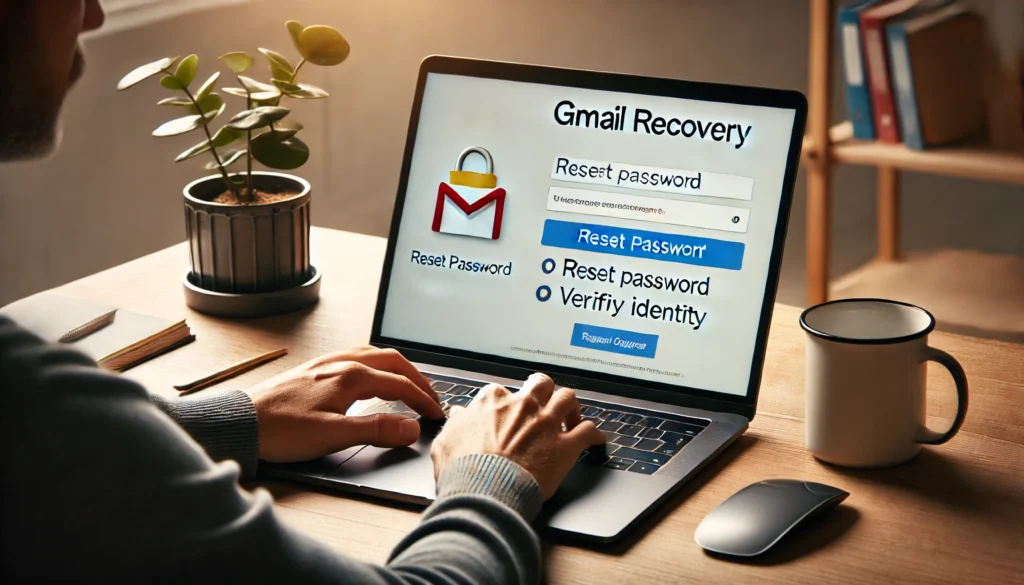Table of Contents
Introduction: What Does 403 Forbidden Mean?
Encountering error messages online is common, but few are as frustrating as the 403 Forbidden error. This occurs when a server refuses access to a webpage, even though it’s functioning properly. What does 403 Forbidden mean? Simply put, it means you don’t have permission to view the content. Unlike errors indicating a website is down, this one suggests restricted access due to incorrect permissions, IP blocking, or authentication issues. If you’ve run into this, don’t worry—there are ways to fix it. Checking website permissions, clearing your browser cache, or contacting the site administrator can help resolve the issue. Understanding why this happens can save time and frustration. In this guide, we’ll explore common causes, how it differs from other HTTP errors, and steps to troubleshoot it effectively.
What Does 403 Forbidden Mean in Simple Terms?
The 403 Forbidden error means your request to access a webpage or resource has been denied by the server. Unlike a 404 error, which indicates a missing page, this error confirms the page exists but is restricted. Common causes include incorrect file permissions, server misconfigurations, or security settings blocking access. Website administrators may also restrict certain users, IPs, or regions for security reasons. Additionally, issues like expired login sessions, faulty plugins, or IP blocks can trigger this error. Identifying the cause is crucial to resolving it and regaining access.
The Technical Definition of 403 Forbidden
From a technical standpoint, 403 Forbidden is an HTTP status code in the 4xx class, which represents client-side errors. When you see this error, the server is saying, “I understand your request, but I refuse to authorize it.” This could happen for several reasons, including insufficient permissions or blocked access.
Why Does the 403 Forbidden Error Occur?
Understanding what does 403 Forbidden mean requires looking at the root causes behind this error. Some of the most common reasons include:
- Incorrect File Permissions: The server settings don’t allow you to view the file due to restricted access.
- IP Blocking: Your IP address is blacklisted or restricted by the server’s security measures.
- Authentication Issues: You lack the necessary credentials needed to access the protected content.
- Server Configuration Errors: Misconfigured settings in the .htaccess file, server rules, or security policies can trigger this error.
Identifying the exact cause is crucial for troubleshooting and regaining access.
Common Causes of 403 Forbidden Errors
Here are the frequent culprits behind the 403 Forbidden error:
- File and Folder Permissions: Servers have permission settings that control who can read, write, or execute files.
- .htaccess File Misconfigurations: Errors in this file can block access to certain resources.
- IP Address Blocking: Websites may restrict access based on geographical regions or IP addresses.
- Incorrect Index Page: If the website’s default page is missing, the server may throw a 403 error.
- Blocked by Security Plugins: Some security tools on websites trigger this error when suspicious activity is detected.

What Does 403 Forbidden Mean for Website Visitors?
For visitors, encountering the 403 Forbidden error can be confusing. It typically means one of the following:
- You’re trying to access a restricted page that isn’t publicly available.
- The website’s owner has blocked your region or IP address for security reasons.
- The page requires special permissions, such as logging into an account or having specific user privileges.
Understanding these possibilities can help determine the best way to resolve the issue.
What Does 403 Forbidden Mean for Website Owners?
If you’re a website owner, a 403 Forbidden error indicates an issue with server permissions or security settings. It may be caused by:
- Incorrect File Permissions: The server is blocking access due to restricted settings.
- Misconfigured .htaccess Files: Errors in this configuration can deny access.
- IP Blacklisting: The server is intentionally blocking certain IP addresses.
Reviewing these settings can help resolve the issue and restore proper access.
How Does 403 Forbidden Look on Different Browsers?
Depending on your browser or device, the 403 Forbidden error may appear in different ways, such as:
- “403 Forbidden – You don’t have permission to access this resource.”
- “Access Denied – You are not authorized to view this page.”
- “HTTP Error 403 – Forbidden.”
While the wording varies, all versions indicate that access to the page is restricted.
403 Forbidden Error vs 404 Error: Key Differences
- 03 Forbidden: The resource exists, but you don’t have permission to access it.
- 404 Not Found: The resource doesn’t exist or has been removed from the server.
How to Fix 403 Forbidden Errors as a User
If you’re facing a 403 Forbidden error, try these steps to resolve it:
- Refresh the Page: It might be a temporary issue.
- Check the URL: A small typo can cause access problems.
- Clear Cache and Cookies: Corrupted browser data may be triggering the error.
- Disable Extensions: Some browser extensions can interfere with website access.
- Try a Different Network: Your IP address may be blocked.
Following these steps can help you regain access to the website.
How to Fix 403 Forbidden Errors as a Website Owner
For website administrators, fixing a 403 Forbidden error involves:
- Checking File Permissions: Set correct read/write settings (typically 755 for folders and 644 for files).
- Reviewing .htaccess Files: Look for syntax errors or overly restrictive rules.
- Examining Server Logs: Logs can provide details on what’s causing the error.
- Whitelisting IP Addresses: Ensure your IP or trusted users aren’t accidentally blocked.
Proper troubleshooting can help restore access and prevent future issues.
403 Forbidden in WordPress: What It Means and How to Fix
WordPress sites often encounter the 403 Forbidden error due to:
- Plugin Conflicts: Deactivate all plugins, then reactivate them one by one to identify the issue.
- Theme Issues: Switch to a default WordPress theme to check for conflicts.
- Corrupted .htaccess File: Rename the file and regenerate permalinks from the settings.
These steps can help diagnose and resolve the error efficiently.
403 Forbidden in API Requests: What Developers Should Know
In API development, a 403 Forbidden error often indicates:
- Missing or Incorrect Authentication Tokens: The API key or access token is invalid or absent.
- IP Restrictions on API Endpoints: Access is limited to specific IP addresses.
- Exceeding Request Limits: Too many requests have been sent in a short period.
Proper authentication and access management can help resolve this issue.
What Does 403 Forbidden Mean for SEO?
Repeated 403 Forbidden errors can negatively impact SEO by:
- Blocking Search Engine Crawlers: Prevents pages from being indexed, reducing visibility.
- Hurting User Experience: Frustrated visitors may leave, increasing bounce rates.
- Sending Negative Signals to Google: Can affect site rankings due to perceived reliability issues.
Fixing these errors promptly helps maintain SEO health and user trust.
The Security Aspect: Is a 403 Forbidden Error a Security Risk?
While not inherently dangerous, a 403 Forbidden error can indicate:
- Blocked Malicious Attempts: A sign that security measures are effectively preventing unauthorized access.
- Misconfiguration: If not fixed, it may expose security vulnerabilities or restrict legitimate users.
Regular monitoring helps ensure security without unintended access issues.
How to Prevent 403 Forbidden Errors in the Future
- Regularly Audit File Permissions: Ensure correct access settings to prevent errors.
- Keep Your Website Software Updated: Protect against vulnerabilities and security risks.
- Use Proper Security Configurations: Set up firewalls and access controls correctly.
- Monitor Server Logs: Detect and resolve unusual activity promptly.
When Should You Contact Your Hosting Provider?
If:
- You’ve tried all basic troubleshooting.
- The server logs show unexplained errors.
- There’s a widespread issue affecting multiple users.
Understanding File Permissions and 403 Errors
File permissions control access rights:
- Read (r): View file content.
- Write (w): Modify file content.
- Execute (x): Run scripts or programs.
Incorrect settings trigger 403 errors.
What Does 403 Forbidden Mean on Mobile Devices?
- Mobile Browsing Issues: Same causes as desktop errors.
- App Restrictions: Some apps block content based on region or account type.
How Firewalls and CDNs Cause 403 Errors
- Overly strict firewall rules.
- CDN caching conflicts.
- IP blacklists within security tools.
Server Logs and How They Help Identify 403 Errors
- Access Logs: Show which IPs accessed which resources.
- Error Logs: Highlight permission issues or server errors.
FAQs About 403 Forbidden Errors
What does 403 Forbidden mean?
It means your access to a resource is denied due to permission settings.
How can I fix a 403 error?
Clear your browser cache, check URL accuracy, or adjust file permissions.
Does 403 affect SEO?
Yes, frequent errors can harm rankings if search engines can’t access your pages.
Can VPNs cause 403 errors?
Yes, if the website blocks certain IP ranges.
Is 403 a temporary error?
Sometimes, but often it requires fixing server permissions.
What’s the difference between 401 and 403?
401 means unauthorized access (needs login), while 403 means forbidden even if logged in.
Conclusion: Understanding What 403 Forbidden Really Means
Understanding what does 403 Forbidden mean helps both users and website owners diagnose and fix access issues quickly. Whether it’s a simple browser cache problem or a deeper server configuration issue, knowing the causes and solutions ensures a smoother browsing experience.
For more informations about 403 Forbidden visite this website.
Related article : How to Buy Hosting from Hostinger in 2025



